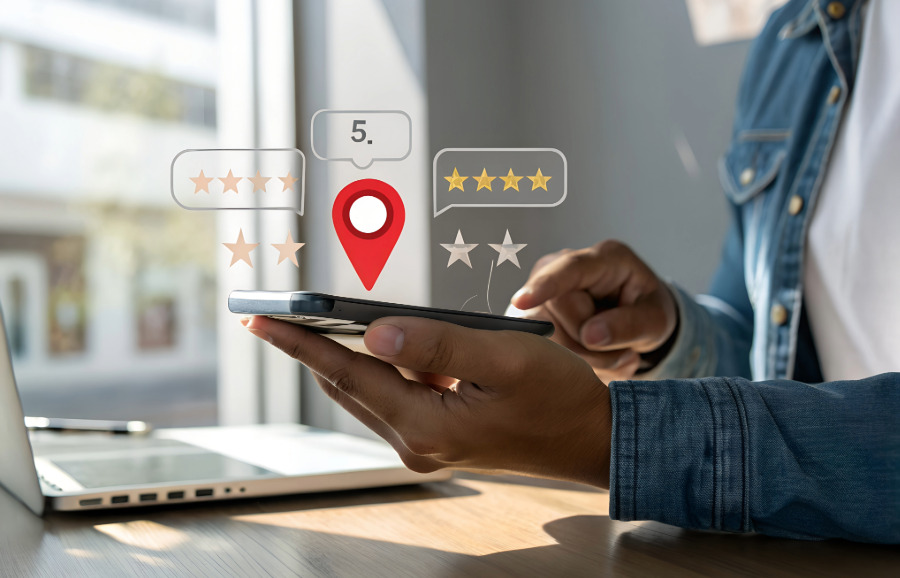Local SEO helps customers nearby find your business when they search on Google, Apple Maps, or other search tools. This checklist breaks local SEO into simple, actionable steps you can follow without being technical. Complete the items that make sense for your business and use this as a clear roadmap to get more local visibility and reliable leads.
1. Basics: Make sure your business info is correct
Business name — Use your real business name the way customers know it.
Address — Use a consistent, full street address on every site and directory where you list it.
Phone number — Use one primary local phone number and list it exactly the same everywhere.
Hours — Keep opening hours and holiday closures up to date.
Why this matters: Inconsistent or incorrect info confuses search engines and customers, and it hurts your local ranking.
2. Claim and optimize your Google Business Profile
Claim your profile on Google Business Profile (formerly Google My Business).
Choose the right category (for example: “Plumber,” “Coffee Shop,” “Managed IT Services”).
Write a clear description that explains what you do and who you serve in plain language.
Add photos: exterior, interior, team, and a few photos of your work or products.
Post updates occasionally (offers, events, or new services).
Enable messaging and turn on notifications so you don’t miss customer inquiries.
Why this matters: Google Business Profile is the top place customers look for local businesses and appears in map searches and local results.
3. Make your website local-friendly
Create a clear contact page with address, phone, hours, and an easy contact form.
Include a short “About” paragraph with location on the homepage or footer that mentions your city and neighborhood.
Add location pages if you serve multiple areas (one page per city or neighborhood).
Show reviews and testimonials on your site to build trust with visitors.
Ensure your site is mobile-friendly since most local searches happen on phones.
Why this matters: Search engines match searchers to local sites that clearly state where they are and who they serve.
4. Collect and manage reviews
Ask customers for reviews after a positive interaction; make it easy by sending a link.
Respond to reviews — thank positive reviewers and address concerns on negative ones politely and promptly.
Focus on Google and at least one industry-specific site (for example, Yelp, Facebook, or an industry directory).
Why this matters: Reviews influence both ranking and the decisions customers make about contacting you.
5. Get listed in trusted local directories
Consistent listings: Ensure your name, address, and phone number (NAP) are the same across directories.
Priority listings: Start with Google, Apple Maps, Facebook, and Yelp; add industry-specific directories relevant to your business.
Remove duplicates or incorrect listings that show old addresses or phone numbers.
Why this matters: Consistency across directories helps search engines trust your business information.
6. Use simple local content and keywords
Write short, helpful content that answers common customer questions (services, pricing basics, how you work).
Mention your location naturally in headings and text (city, neighborhood, nearby landmarks).
Use simple phrases customers use like “HVAC repair in [City]” or “best coffee near [Neighborhood].”
Why this matters: People search using natural phrases; including them makes you easier to find.
7. Technical basics (non‑technical actions)
Ensure your site loads reasonably fast — if it’s slow, mention it to your web designer or hosting provider.
Make sure your address is on the contact page and in the footer of your site.
Use clear page titles (the headline you see in search results) that include your service and location.
Why this matters: These small fixes remove barriers that stop search engines from showing your site to local customers.
8. Local links and partnerships
Join local business organizations (chamber of commerce, local associations) and get listed on their sites.
Sponsor a local event or partnership and ask for a website mention.
Work with complementary local businesses for cross-referrals and online mentions.
Why this matters: Local links and mentions help build credibility and can improve local visibility.
9. Monitor and measure (simple tracking)
Check your Google Business Profile insights for views and clicks.
Monitor calls and contact form submissions to see whether local visibility is improving.
Set a quarterly reminder to review listings, update hours, and refresh photos or posts.
Why this matters: Regular checks show what’s working and where small updates will help.
Quick Local SEO Checklist (one-page)
Claim Google Business Profile and choose correct category.
Use the same business name, address, and phone everywhere.
Add address and hours to website contact page and footer.
Ask customers for Google reviews and respond to them.
Add photos to Google Business Profile and your site.
Create simple location pages if you serve multiple areas.
List your business on major directories and local organizations.
Post short local content that mentions your city and services.
Check site speed and mobile friendliness.
Review listings and performance every quarter
Local SEO is mostly about clarity and consistency: make it easy for people and search engines to understand who you are, where you are, and how you help. Start with Google Business Profile and consistent listings, then layer in reviews, local content, and partnerships. If you’d like, we can run a quick local visibility check as part of our Free Digital Marketing Audit and hand you a prioritized list of what to fix first.





